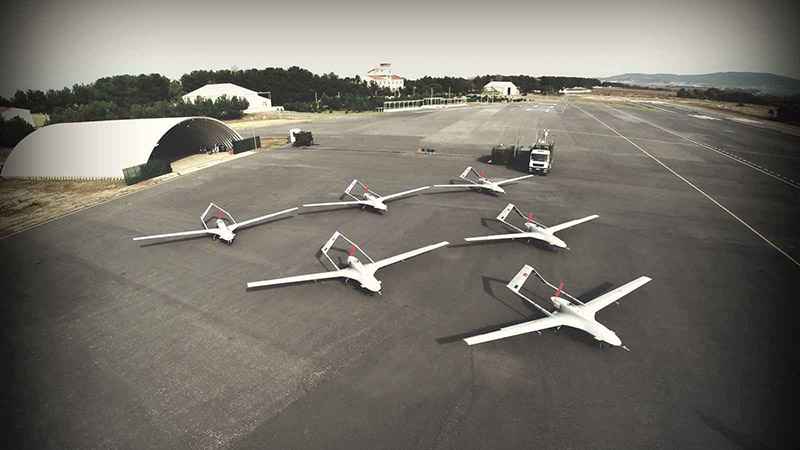In December 2022, Turkish drone manufacturer Baykar’s CEO, Haluk Bayraktar, signed a contract with the Albanian prime minister, Edi Rama, to deliver 3 Bayraktar TB2 unmanned combat aerial vehicles to the armed forces of Albania in the first stage with options to expand the fleet in future. The reputation and international demand for Turkish Bayraktar TB2 and Bayraktar Akinci have risen across Europe since the start this February of Russia’s war on Ukraine. The number of countries to which the Bayraktar TB2 nmanned combat aerial vehicle is being exported has risen to 27, according to the company. The Bayraktar TB2 is seen as pivotal in conflicts ranging from Karabakh to Ukraine.
The Bayraktar TB2 is a medium-altitude long-endurance (MALE) unmanned combat aerial vehicle (UCAV) capable of remotely controlled or autonomous flight operations. It is manufactured by the Turkish company Baykar Makina Sanayi ve Ticaret A.?., primarily for the Turkish Armed Forces. The aircraft are monitored and controlled by an aircrew in a ground control station, including weapons employment. The development of the UAV has been largely credited to Selçuk Bayraktar, a former MIT graduate student. By November 2021, the TB2 drone had completed 400,000 flight-hours globally. While the Turkish Armed Forces describes Bayraktar TB2 as “Tactical UAV Class” to prevent it from being a competitor to the TAI Anka UAV, international standards would classify it as a medium-altitude long-endurance UAV.

The Bayraktar TB2 platform has a blended wing body design with an inverted V-tail structure. Thrust is generated by a variable pitch two-blade propeller in pusher configuration. The propeller is mounted between the tail booms and driven by an internal combustion engine located in the body. The monocoque platform is modular with detachable main items such as wing, tail boom, and V-tails. Fuselage pieces are made mostly of carbon fiber composite with machined aluminum parts at joints. Fuel is stored within bladder tanks and fuel consumption is balanced with solenoid valves. The ground control station (GCS) is based on a NATO spec shelter unit which is equipped with cross redundant command and control systems.
The mobile unit supports three personnel: pilot, payload operator and mission commander. The GCS is equipped with redundant air conditioners and nuclear, biological and chemical filtration (NBC) filtering unit. All hardware inside the shelter is placed inside racked cabinets. Each operator has dual screens in front along with the operator interface software used for real-time command, control and monitoring. Each TB2 is configured with six aerial vehicle platforms, two ground control stations, three ground data terminals (GDT), two remote video terminals (RVT) and ground support equipment. Its ground control system’s cross redundant architecture allows for pilot, payload operator and mission commander to command, control and monitor the platform.
Arnavutluk ile #BayraktarTB2 S?HA ihracat sözle?mesi imzalad?k. ?? ??
Bu anla?ma ile #BayraktarTB2 S?HA ihraç edilecek ülke say?m?z 27 oldu.
We signed an export contract for the #BayraktarTB2 armed UAV with Albania. ?? ??#MilliTeknolojiHamlesi ?????? pic.twitter.com/ZlPX0MegCC
— BAYKAR (@BaykarTech) December 20, 2022













